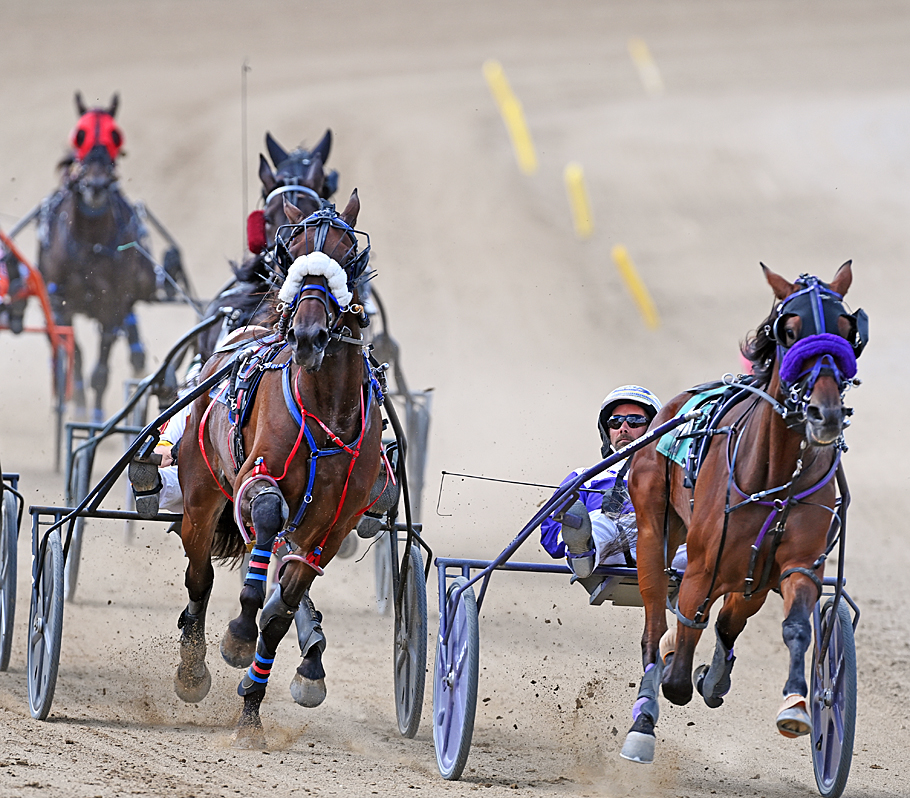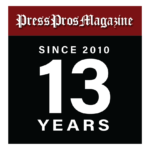
“You want to race at the Little Brown Jug as an owner. You want to race here as a trainer. You want to have your horse entered here. There’s something historic, and special, about the Delaware County Fair.” (Press Pros Feature Photos)
First-time-in-a-long-time trip to the Little Brown Jug revealed a lot of people I didn’t think I’d see, and inside perspective of one of the world’s best-kept secrets in big-time horse racing.
 Delaware, OH – You don’t think of it in the same terms as you do the Kentucky Derby, or The Breeder’s Cup. It doesn’t seem to get that kind of publicity.
Delaware, OH – You don’t think of it in the same terms as you do the Kentucky Derby, or The Breeder’s Cup. It doesn’t seem to get that kind of publicity.
Yet, try to casually drive into the Delaware County Fairgrounds this week without waiting in line…try to find parking convenient to the grandstand…try to elbow yourself through the crowds to a vacant seat, and you quickly realize you’re in the midst of a very big sporting event.
“One of the biggest in the world of harness racing,” says friend Frank Fraas, a public relations coordinator for the Ohio Harness Horseman’s Association. “The Little Brown Jug is the third jewel of pacing’s Triple Crown. Delaware is the granddaddy of the county fairs in Ohio. We race in 65 county fairs across the state, and we still have four to go [this year], but this is the one people always put on their calendar.

The name ‘Little Brown Jug’ was borrowed from an iconic Tennessee pacing horse of the same name from the 19th century.
“You want to race at the Little Brown Jug as an owner. You want to race here as a trainer. You want to have your horse entered here. There’s something historic, and special, about the Delaware County Fair.”
The Hambletonian is bigger, older, and probably better known. Held currently at the Meadowlands Race Track, in New Jersey, The Hambletonian first ran in 1926 at the New York State Fair, in Syracuse. Part of what’s known as the ‘Trotters Triple Crown’, it’s the first of three races for 3-year-olds – the Hambletonian, the Kentucky Furity, and the Yonkers Trot.

What they race for…the Little Brown Jug was created to showcase the ‘pacer’ line of standardbred racing.
“The Hambletonian was a race for trotters,” adds Fraas. “But a guy here in Delaware County named Joe Neville was concerned about recognition for the pacing horses, so in 1946 he and Hank Thomson, the sports editor of The Delaware Gazette, campaigned for this race to showcase the pacers.”
It found a following, and a place among the top events in the Standardbred genre of horse racing, eventually becoming the anchor leg of the pacing Triple Crown in 1956 – the Cane Pace (Meadowlands Race Track), The Messenger Stakes (Yonkers Raceway), and the Little Brown Jug (Delware).
The name Little Brown Jug was borrowed from an iconic Tennessee pacing horse of the same name from the 19th century, significant enough to the sport of racing to be portrayed in several Currier & Ives lithographs (see photo, at right).
It had been years – decades – since I first attended the Little Brown Jug series at the Delaware County Fair, sometime in the mid 80’s. A big deal then, it’s still a big deal among racing enthusiasts, some who claim they haven’t missed one in fifty years.
“I’ve been coming since 1974…missed one year during that time,” said a man from Pennsylvania. 48 years!
Unlike bigger venues at the Meadowlands and New York City, it’s cozy, reflecting Ohio’s county fair culture. Delaware, by comparison, is like the village of Sleepy Hollow, in the famous story of Ichabod Crane, with his headless horseman.

“It’s nothing like New Jersey or New York. People were sitting in their chairs by 7:30 this morning, waiting for this to start.” – Frank Fraas, Publicity Coordinator, Ohio Harness Horseman’s Association
“It’s nothing like New Jersey or New York,” says Fraas. “But I got to the track this morning at 7 am and by 7:15 people were pulling coolers down the backstretch. They were sitting in their chairs by 7:30, waiting for this to start.
“People will put their chairs up on the fences next week, so they have their spot marked for next year. And another thing about this place…you can bring your own beer. You can’t bring it into the grandstand, but you can bring your own beer. There’s parties everywhere, and when the Little Brown Jug goes off (the climactic finale race) the roar you hear from the crowd today is going to be unbelievable.”
It was an unbelievable roar, as driver Chris Page, from Delaware, steered a three-year-old named Bythemissal to victory on Thursday to claim the $641,550 purse in the Little Brown Jug final. Page, just 38 years old, called it, “The icing on the cake of my career.”
Bythemissal became just the second Ohio-bred pacer to win the race in its 77-year history. Trainer Ron Burke won his fourth ‘Jug’, just the third to have trained at least four winners of the race, joining Hall of Fame names, Stanley Dancer (with four), and Billy Haughton (with six).


